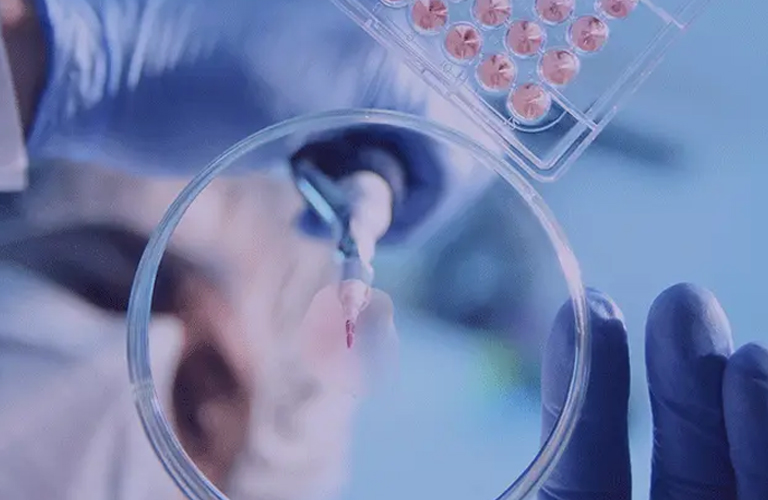Bruce Lamb:Identification and Characterization of Immune-Focused Therapeutic Targets in the MODEL-AD and TREAT-AD Consortia
Hi everyone. First of all, I would like to take this opportunity to thank the organizers and other speakers for organizing this fascinating symposium. Today, I’d like to present our work in two different consortia. They are the MODEL-AD and TREAT-AD consortia, and are closely linked to our FRS theme. This is my disclosure.
Today I want to introduce you to the MODEL-AD and TREAT-AD consortia. And in particular, I will introduce in details the MODEL-AD consortium, including several different data related to today's topic. They include site-specific and cage-specific changes in microbiomics, model-specific and site-specific changes in brain transcriptomics, and peripheral and central regulation in metabolomics. Finally, I will briefly introduce the newly established TREAT-AD consortium.
Both the MODEL-AD and TREAT-AD consortia are research efforts initiated by NIA, and are aimed at improving the capabilities of our AD clinical trials and striving for their ultimate success. Obviously, we haven't had a lot of success so far, but there are still many ongoing clinical trials.
One of the NIH-initiated efforts is the development of better animal models that will allow us to conduct better preclinical evaluations of efficacy and, ultimately, develop more effective AD treatments. Part of this work is the development and preclinical efficacy evaluation of an animal model of late-onset Alzheimer's disease (MODEL-AD).
This consortium is made up of the institutions listed at the bottom of the slide. In general, we have several different goals. Late-onset AD is a late-onset disease, which is different from early-onset AD, and in biological modeling, we prioritize late-onset disease variables, which is very different from previous models. We use CRISPR to create new mouse models; we perform high-volume screening of all models and perform in-depth phenotyping of promising models; we align mouse and human phenotypes, including neuropathy, omics, and imaging; we conduct preclinical trials on the most promising models and therapies; and finally, we share all data and models in a broad and unrestricted manner. Among the project team members, we have different core components, including a Bioinformatics and Data Management Center, a Disease Modeling Project Team, and a Preclinical Trial Center.
The first data I want to share with you today from MODEL-AD is the altered microbiome in an AD mouse model. We obtained biological samples used to study the relationship between this microbial change and AD from three locations with MODEL-AD investigators: Indiana University, the Jackson Laboratory, and the University of Pittsburgh. Although we cannot control all other experimental parameters, the mice had the same colony, the same genetics, and the mice were fed the same diet at each site. We studied a number of different mice, including male and female late-onset disease models, including APOE4 to TREM2 mouse models, and 5XFAD early-onset models, with a total of 564 samples ranging from 2 to 21 months of age. And all of this research was done by Mark Adams and Lauren Long from Mark's group.
We performed microbial beta-diversity analysis on all samples, and below are the results of some of the analyses. In the analysis of the principal components, you can see that different colors and different shapes represent samples from different feeding sites. We know that these experiments are grouped according to site, which is the main principle for studying site specificity, and that’s also the same when looking at cage specificity. Therefore, the generation of different results is not only site-specific, but also cage-specific. Interestingly, however, we observed no beta-diversity changes associated with model specificity or age specificity.
The next study presented is about the model-specific and site-specific effects on brain transcriptomics that we have been trying. We performed an initial pilot study using 7-9-month-old B6,5xFAD early-onset mouse model and APOE4 knock-in, APOE4.TREM2R47H homozygous mouse model samples. We then used the NanoString technology to examine the mouse’s neuropathology gene panel, which has 770 genes associated with neuropathology. We found that principal component 1 was affected by transgenic 5xFAD mouse models from Indiana University and the Jackson Laboratory, suggesting that these models have important effects on gene transcription. We also found that principal component 2 was affected by APOE4 and APOE4.TREM2R47H mouse models from Indiana University and the Jackson Laboratory. Finally, we found that principal component 3, although not shown in the figure, separated the samples by site, and principal components 4 and above were not associated with any variable, so they are considered as uncorrelated noise. We are now extending our study to analyze age- and location-related RNA-Seq data from MODEL-AD mice.
The last MODEL-AD study I'm going to talk about is actually about peripheral and central regulation in metabolomics in AD animal models. This study was done in collaboration with Mathias Arnold, Gabi Kastenmüller, and Rima Kaddurah-Daouk, and we used a large number of models, including the 5xFAD early-onset genotype mouse model and the human APOE4.TREM2R47H late-onset genotype mouse model (called “hAT”) from the aforementioned teams. We analyzed 6-month-old male and female mice with 9 to 12 biological replicates. We then quantified 142 metabolites in the serum and brain of the same animals, which was important work for the study. In fact, we can see that the main metabolic components in serum and brain of different models are different and can be divided into two different subgroups.
We focused more on the heatmap level of metabolic components. Interestingly, this slide shows that the major metabolic components in the serum and brain of the hAT mice are very different.
On the left side of the slide, the metabolic component levels are presented in a bar graph. We found that some specific metabolic components in the hAT mice showed low levels in serum, or even inverse correlations, but high levels in brain. The results in serum are consistent with previous work by Mathias Arnold and his colleagues, whose experiments showed that some of the same metabolites were reduced in the serum of APOE4 gene carriers. Apparently, though, they didn't look at changes in metabolites in the brain, suggesting that the results in the brain might be different.
Finally, I would like to thank the members of the large MODEL-AD consortium, which includes various investigators from Indiana University, UC Irvine, Sage Bionetworks, and the Jackson Laboratory. This is our website where you can find more information or get in touch with our specifically-founded External Advisory Committee via email or Twitter. We’ve also received great support from the National Institute on Aging (NIA), especially Lorenzo Refolo, who is our program officer.
Next, I'll briefly introduce a recently formed new consortium, called the TREAT-AD Consortium, which is aimed at advancing the development of AD drugs. The vision of the consortium is to develop high-quality research tools and technologies to validate and advance the development of next-generation drug targets for AD. The consortium funds two centers, IUSM-Purdue and EMORY SageBionetwoks.
The researchers at the IUSM-Purdue Center sincerely hope to reinvigorate the drug development process. The goals are: to establish a pipeline of AD drug discovery targets representing innovative AD treatment hypotheses; and to prioritize targets with the best therapeutic opportunities for development. The initial focus was on neuroimmune targets, which overlapped with the work of the MODEL-AD consortium. At the same time, the goal is also to create high-quality molecules that have the potential to be further translated into results. Finally, it hopes to share data with researchers around the world to expand the R&D center's drug discovery efforts.
The composition of this IUSM-Purdue TREAT-AD Center are Alan Palkowitz and me, who are the PIs. The center houses the Bioinformatics and Computational Biology Group, the Structural Biology and Biophysics Group, the Analytical Method Development and High Throughput Screening Group, and the Medicinal Chemistry and Chemical Biology Group.
Finally, this page presents the entire staff of the IUSM-Purdue TREAT-AD Center, including administration, bioinformatics, analytical method development and high-throughput screening, biological structure, medicinal chemistry. Once again, I would like to thank the National Institute on Aging for funding the center, and especially for the work of Refolo, the program officer.
I will end my speech now. Thanks you all for listening to my presentation, and to those by other speakers. Thank you!








